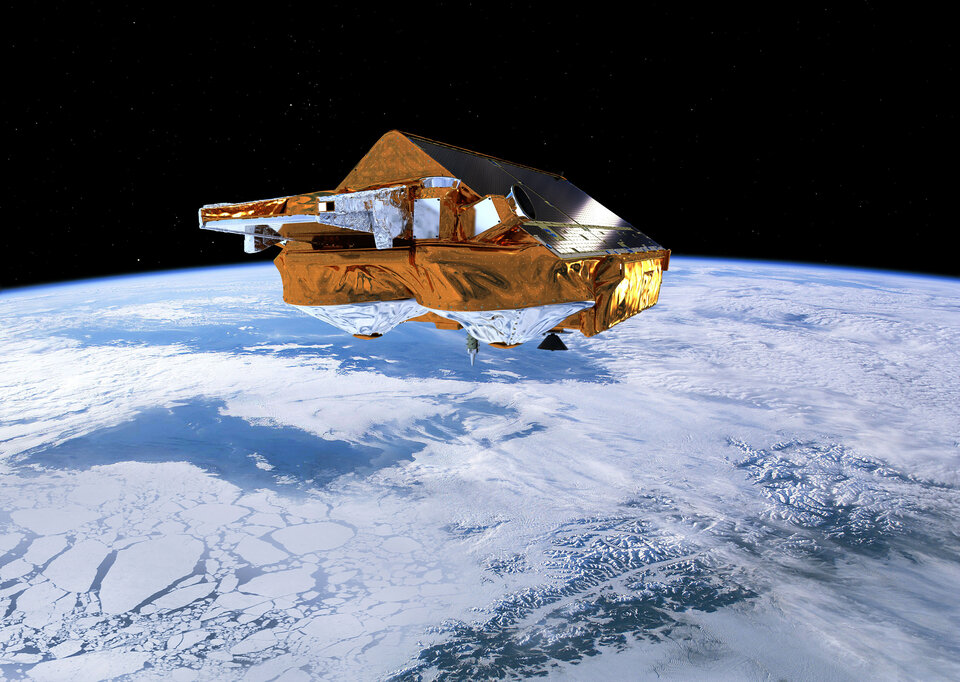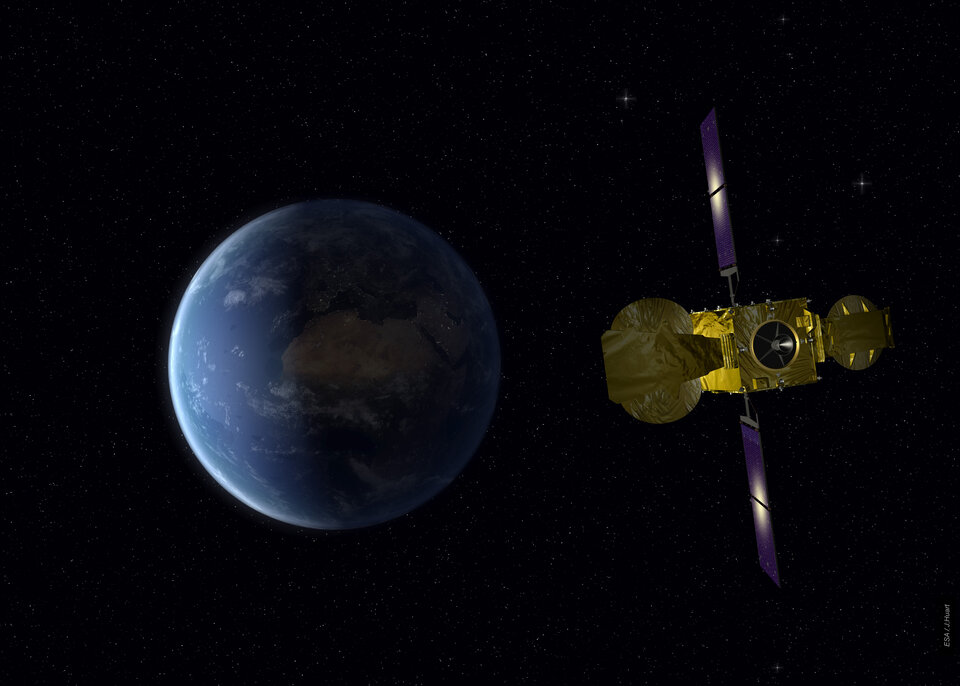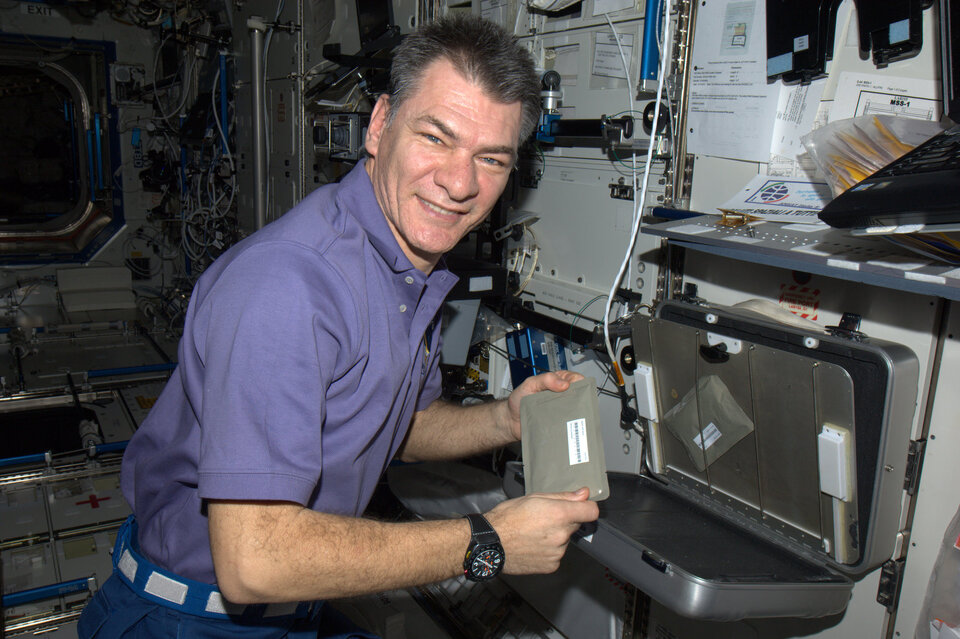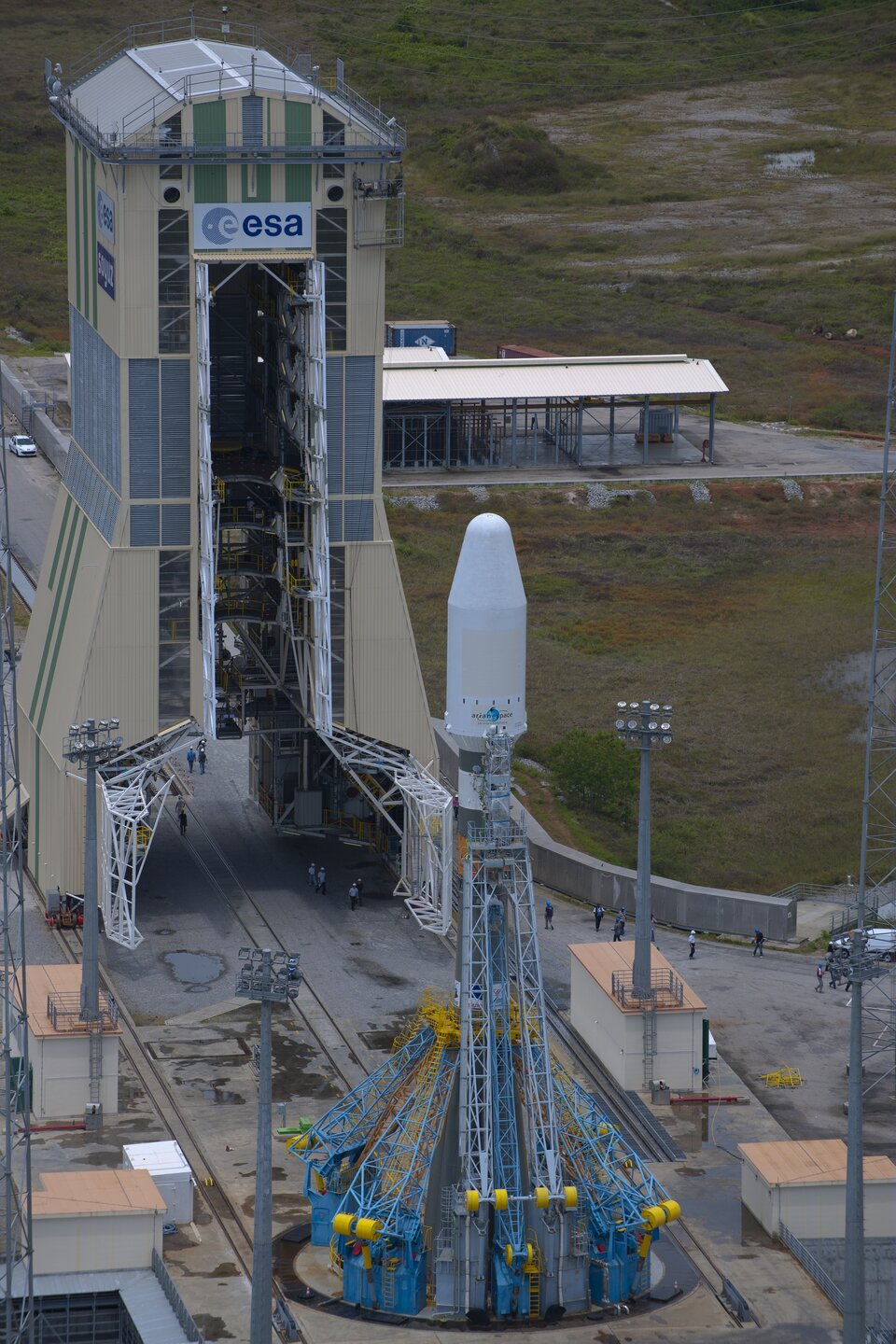ESA's DG in European Space Directory 2011
Jean-Jacques Dordain, ESA Director General, looks back at ESA's achievements in 2010 and discusses what is yet to come in 2011 in the foreword of the 26th Edition of the European Space Directory (Text prepared in March 2011 for the Edition that has just been released).
European Space Directory 2011, 26th Edition
Foreword by Jean-Jacques Dordain, ESA Director General
If, for ESA, 2010 was the year of Science, 2011 will be the year of launchers. It will mark a turning point in the history of ESA as Soyuz and Vega will join company with Ariane 5 as they lift off on their maiden flights from the Guiana Space Centre, Europe’s spaceport in French Guiana. With Soyuz and Vega, as of the second half of 2011, the new European launcher family will offer a fantastic increase in launch capabilities as well as a full range of services to Europe.
Looking back at 2010
Let us begin by having a look at the main successes of 2010.
In the field of space science, in May 2010 the Herschel infrared observatory revealed hidden details of star formations. In July 2010 Planck delivered its first all-sky image to tell us about formation galaxies and how the Universe itself came to life after the Big Bang. Moreover, in early January this year, European scientists released a catalogue containing thousands of sources detected by Planck ranging from radio to far-infrared wavelengths.

In Earth observation, April 2010 saw the launch of Cryosat 2, a mission dedicated to studying ice cover on our planet. Thanks to Cryosat 2, SMOS and GOCE (both launched in 2009), ESA has become the space agency that devotes the greatest effort to the study of climate change. SMOS delivered its first results on soil moisture and ocean salinity in October while GOCE gave us the first global gravity model in June 2010.
Towards the end of 2010 we gave the green light to the start of the Meteosat Third Generation programme following the largest industrial competition by volume ever held in Europe. As a result, the operator, Eumetsat, will, as of 2017, have access to the most innovative system in existence for delivering weather forecasting services.
In October 2010 we celebrated the tenth anniversary of the International Charter 'Space and Major Disasters' providing emergency services and NGOs with the satellite data required to manage the crises arising in the wake of natural disasters. Initially set up by ESA and the French space agency CNES, the Charter now counts among its members 11 space agencies worldwide.

As to telecommunications, the end of November 2010 marked the successful launch of the Hylas mission on Ariane. Hylas-1 is the first ESA project to have been carried out in partnership with a private investor, in this instance the UK’s Avanti. This partnership resulted in a combination of technological innovation in the form of an ESA payload and new, innovative broadband services provided by the operator. Other partnerships have been formed, with Inmarsat on Alphasat, and with Hispasat on the Small GEO platform. The European Data Relay Satellite (EDRS) partnership with Astrium Services will take shape as another important PPP in the course of 2011. With EDRS we will move from the technical demonstrations achieved via the Artemis satellite to real operations starting with providing the services for the Sentinels within the GMES (Global Monitoring for Environment and Security) programme.

The highlight of 2010 in the area of human spaceflight came on 15 December when ESA astronaut Paolo Nespoli made his way to the International Space Station with crewmates Dmitri Kondratyev and Catherine Coleman aboard their Soyuz spacecraft following liftoff from the Baikonur Cosmodrome in Kazakhstan. Paolo will serve for six months on the ISS as a flight engineer. His return to Earth is planned for May 2011.
On a political level, the 2nd International Conference on Space Exploration on 21 October - co-organised by the Belgian Presidency of the EU, European Commission, the Chair of the ESA Ministerial Council (Italy) and by ESA - concluded that immediate action is needed to ensure that Europe will have a significant role in future space exploration. It confirmed the message that space exploration is a driver for innovation, developing new technologies and making scientific discoveries, but also a political and global endeavour.
The 7th Space Council - the joint and concomitant meeting of the EU Council and ESA Council at ministerial level - was held on 25 November in Brussels. This was the first Space Council to take place after the entry into force of the Lisbon Treaty on 1 December 2009, which for the first time granted the EU competence in the space domain. The recent Space Council again demonstrated Europe’s determination to boost space policies. The member states praised ESA’s good work over many decades, and reiterated the need to support the Agency as a source of European excellence and leadership in space.
The introduction of a specific EU competence in space is great news for Europe and ESA. ESA focuses on research and development of space systems and their applications, while the EU brings a clear picture of how space can best serve Europe’s citizens and European policies, both ESA and the EU relying upon their Member States to make Europe a relevant partner in space.
Looking to 2011
ESA continues to expand, with Romania now having become part of the ESA family. The accession agreement for Romania to become the 19th ESA Member State was signed in Bucharest on 20 January. Before becoming ESA Member States, new countries join the Plan for European Cooperating States (PECS), which is designed to help European countries, particularly those that acceded to the EU after 2004, to join ESA. Current signatories of PECS plans are Hungary and Poland. In addition, a cooperation agreement with Israel was signed on 30 January.

On 16 February 2011, ESA’s second Automated Transfer Vehicle (ATV-2) was launched to the International Space Station on an Ariane 5 rocket from Europe’s spaceport in French Guiana. Named ”Johannes Kepler” after the German astronomer and mathematician, ATV-2 has carried a substantial cargo - experimental equipment, spare parts, food, air and water - to the ISS crew, 400 km above Earth, guided by an onboard high-precision navigation system. The vessel docked automatically with the Station's Russian service module Zvezda 8 days after launch. After remaining attached to the Space Station for up to six months, the ATV will detach and re-enter Earth's atmosphere in a controlled way, burning up together with several tonnes of waste. During its docked phase the ATV will also boost the ISS at regular intervals into a higher orbit to enable it to overcome the effects of the remaining gravitational pull felt at that distance from the Earth.
On 12 April we will remember Gagarin’s first flight into space. 50 years earlier, on April 12, 1961 at 9.06 am Moscow time, the ignition of an R-7 rocket shattered the peace of a fine spring morning. Less than four years earlier, another R-7 had put the world's first artificial satellite into orbit. This time, its cargo was far more fragile: 27-year-old Russian lieutenant Yuri Gagarin was about to become the first man to orbit the Earth. Just 108 minutes after his Baikonur lift-off, Gagarin was back on Earth.
Among today’s astronauts, ESA's Roberto Vittori, from Italy, is assigned as a Mission Specialist to space shuttle mission STS-134, scheduled for launch on 19 April. This mission will deliver the Alpha Magnetic Spectrometer (AMS) to the International Space Station. Once attached to the right side of the Station’s truss, AMS will collect information from cosmic sources to search for evidence of anti-matter and further advance our knowledge of the Universe. The AMS experiment, led by Nobel laureate Samuel Ting of MIT, involves an international team drawn from 56 institutes in 16 countries. ESA is a partner in AMS through the Agency’s Directorate of Human Spaceflight. Vittori’s flight opportunity stems from a bilateral agreement between the Italian space agency (ASI) and NASA involving the utilisation of the Italian-built Multi Purpose Logistics Modules. Vittori will fly into space for the third time but for the first time on a Space Shuttle.

In the second half of 2011, Soyuz will be launched for the first time from the European Spaceport in French Guiana. Activities aimed at preparing the ground installation will be completed by the end of March 2011 and by the beginning of April the ELS (Soyuz launch complex) will be handed over to Arianespace to perform a roll-out test of Soyuz in its ST-A configuration to demonstrate readiness to launch missions in Geostationary Transfer Orbit. The Soyuz launch complex will then be adapted for the Soyuz ST-B configuration to allow the launch of the first pair of Galileo satellites to take place.
The launch slot for the first Galileo In Orbit Validation satellite pair on a Soyuz launcher from the Guiana Space Centre opens on 15 August 2011 and will remain open until 15 September 2011. After the successful launches of the Galileo 'precursor' satellites Giove A in 2005 and Giove B in 2008 to validate the technologies of the new system, the first two elements of the Galileo constellation will be launched this year, to be followed next year by the second pair. By 2015, there will be 18 satellites in orbit, allowing the first operational services to be activated: the Open Service, the Search and Rescue Service and the Public Regulated Service. The full Galileo system - the first EU flagship programme - will consist of 30 satellites in orbit and the associated ground infrastructure.
Although there is a growing tendency for satellites to become larger, there is still a strong need for a small launcher to place 300 to 2000 kg satellites, economically, into the polar and low-Earth orbits used for many scientific and Earth observation missions. Vega, Europe’s new small launcher nearing completion, is the answer to such needs. In the autumn/winter period of 2010, the Vega test campaign was conducted at Europe’s Spaceport with the transfer of the mock-up of the launcher’s first stage from the integration building to the Vega launch zone and the mechanical validation of several elements of the launch vehicle and ground segment. The combined tests that have been running since October 2010 are expected to be completed by June 2011. After all flight hardware is manufactured and shipped to Kourou, the Flight Readiness Review can get under way in July 2011 with the launch campaign to begin simultaneously. Vega’s maiden flight is currently planned for September.
2011 will close with yet another ESA astronaut in space. André Kuipers, from the Netherlands, is scheduled to reach the ISS in December 2011 on board a Soyuz spacecraft and to remain on the Station as part of the six-astronaut international crew until June 2012. This will be Kuipers’ second visit to the ISS after the 11-day Delta mission in April 2004, which was sponsored by the Dutch government and was also carried out using a Soyuz spacecraft. The European astronaut will be trained for robotic activities and for a possible extra-vehicular activity (EVA).
2011 is a very busy year in terms of events, and at the end of the year ESA will be a fundamentally different ESA from the one we have known so far. We will have undergone a true revolution as from this year we will be working with three launches in parallel and not only one. The 'year of launchers' will be remembered for being a real turning point for our Agency, its Member States and for Europe as a whole.
All that 2011 will bring is possible only thanks to the continuous support of the Member States of ESA and the capabilities of European industry.




